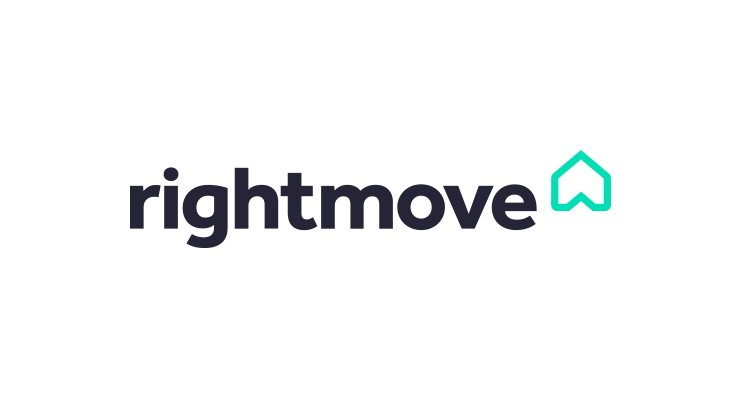The Definitive Guide To Social Media Metrics (And Which Ones Matter).
Social media analytics can leave us feeling completely confused – exactly the opposite of what they are designed to do.
They should offer clarity. But extracting wisdom from the numbers and understanding what to do next can be hard. There are an overwhelming amount of measurements that many of us scan over, before closing the webpage and moving on with our day.
But ignoring stats can leave us in the dark, resulting in us wasting time on the wrong thing and getting frustrated with the lack of results. If you choose not to monitor your performance, you will be left wondering: Am I using social media correctly? Am I getting the optimal results for my business? And, really, how do I know for sure?
Social media metrics can be extremely helpful if you know what they mean and, more importantly, which ones are meaningful to your business. Armed with this knowledge you can stay fully focused (and sane) when it comes to social media.
To determine which metrics you should spend your time on, ask:
“What do I want to achieve from my social media marketing?”
If you can answer this, you are one step ahead of the many people who embark upon social media with no direction. The answer means you know what success looks like, and therefore which metrics relate to it. Having clarity in what you are trying to achieve is half the battle – you will immediately feel more calm, competent, and confident moving forward.
If you are on social media to enhance customer service, you should focus on how quickly you respond to customer queries and the number of resolved issues as a result. If you are more concerned with brand awareness, reach will be an important metric to you.
If you have multiple objectives for social media and are drowning in numbers but starving of knowledge, ask:
“Does that social media metric help me make a business decision?”
If yes, it is important to measure. If no, stop measuring it because it fails to prove social media ROI and will distract you from what really matters.
At each stage of your social media marketing – from what you do, to what you get from it – there are Key Performance Indicators (KPIs) you can be tracking.
Activity:
- What you and your team do on social media.
Reach:
- The actual and potential amount of people you can reach on social media.
Engagement:
- Interactions and interest in your content/company.
Acquisition:
- Relationships you create with prospects.
Conversion:
- Actions, enquiries, sales.
Retention and advocacy:
- Happy clients and advocates of your business.
Which ones you choose to measure come down to your objectives and how much time/resources you are prepared to spend. However, most social media management programmes offer free software to help you keep track of everything you need to know (including Propertyflock which is specifically designed for property professionals).
To give you a better idea of what you can and should be measuring, here is a rundown of the most commonly tracked social media metrics:
Post Count
Number of social media posts per period. Having clear targets of how much you should be doing helps you stay organised and maintain an active social presence. You can use scheduling tools (we offer a free one at Propertyflock) to automate your posts throughout the day and minimise the time you spend behind the screen. Don’t forget that beyond fixed posts, you should be engaging with people online in realtime in order to build relationships.
Content Count
The number of pieces of content you produce per period. Content creation is a key part of being active and influential on social media so it is important to share a steady flow of material. The creation and sharing of content can be planned in advance using a content calendar specifying blog post topics and dates.
Fans/Followers
The total number of people that are ‘liking’ or ‘following’ you on social media. You should keep an eye on this (and by all means celebrate growth), but treat it with caution. It is easy to get distracted by this number and forget to analyse more meaningful data like who these people are and how they are interacting with you. Remember:
Audience Growth Rate
The growth/decline of your audience over a particular time period. Audience growth rate is an improvement on simply counting followers, as it compares your audience now to your audience in the previous period (yesterday, last week, last month etc.) which provides context. It is calculated by dividing the number of new audience members by total audience members, and from here you can dig deeper into what causes peaks and troughs in growth.
Impressions
How many people saw your message/piece of content, but not necessarily read or interacted with it. People may see multiple impressions of the same post, for example if they see it in their newsfeed/twitter stream and then a second time when a connection of theirs shares it.
Reach
The potential number of people in your audience and community (including friends of your followers) who see your post. Your reach may be less than your impressions as one person could see multiple impressions.
Engagement
The total number of likes, shares, and comments on a post. Social media is all about sharing and engaging with content, therefore engagement rate is a good way to measure the effectiveness of the content you’re putting out there and the quality of your audience (how active and engaged they are).
Average Engagement Rate
Compares individual post engagement to total followers/fans. The great thing about engagement rate is it is relative to page size, meaning you can compare yourself to bigger or smaller brands with unbiased results.
Applause Rate
The different ways someone can promote your posts, for example +1 on Google+, Liking it on Facebook.
Amplification Rate
The number of reshares/retweets on average for each of your posts, resulting in amplified reach.
Tip: If one of your post’s reach/exposure is significantly higher than its mentions, you can assume that someone with a large social following is distributing your content – Find out who this influencer is and explore how you may be able to work together. Here’s a post on influencer marketing specifically for estate agents if you want to learn more.
Response Rate
How many comments and replies you respond to on social media, or how many social media leads your marketing/sales department follow up with. Your response rate can be a key factor in achieving great customer service and a loyal fan base – Customers are 3 times more likely to recommend a brand after a positive social experience.
Response Time
How quickly you respond to messages. A study into social media customer service found that 42% of people expect a response within 60 minutes (32% expect a reply within 30 minutes), so response time can be a great metric to track in order to improve your customer service.
Share of Voice (SOV)
Helps you know how much (or how little) of an impact you are making in your industry. The formula is relatively simple once you have collected the data: Share of Voice = Your Mentions / (Total Mentions for Competitive Companies/Brands). SOV can also be used to evaluate brand awareness and market share for your company.
Sentiment
The emotion behind a social media mention. You may think a lot of people talking about you/your company is a good thing, but without sentiment to add context, the number of mentions alone can be misleading. Sentiment focuses on the tone of the conversation – is the person happy, angry, frustrated? Using sentiment analysis helps you identify, record and act on negative, positive and neutral mentions around your brand.
Clicks
The number of clicks on a link you share. If nobody clicks on your content, why is that? It could be that your call to action isn’t strong enough, your headline isn’t connecting with your audience, or the image isn’t intriguing enough.
Click Through Rate (CTR)
The rate at which your audience clicks on a link, found by dividing the number of clicks on a post by the number of impressions.
Visits vs Unique Visits
Visits counts as each time a person visits your website or webpage, regardless of whether or not they have visited it before. Unique visits count a person only once, whether or not they visit your page multiple times. As a lot of what you do on social media will direct people to your website, this is an important metric to monitor.
Leads
Leads are potential conversions. These include anyone with the need or interest to pursue your product or service. Your aim should be to identify the needs/wants/objections of your leads and convert them using appropriate material and calls-to-action. Identifying the source of all leads helps you understand what marketing is working to bring people to your – Some agents ask each new vendor to complete a short questionnaire to find out how they heard of them e.g. boards, social media, direct mail etc.
The metrics you track should inform your future initiatives on social media. By identifying the types of content or messaging that receives highest exposure and engagement, you can determine what’s resonating with your audience and perfect future content and campaigns.
At Propertyflock we send a full report of social media stats to all of our members, including activity and engagement metrics (the screenshots above show snippets). The weekly report also shows agents how they compare to local and national competitors, and recommends new content to share. We believe this report includes the most helpful and relevant insights, but whichever social media software you choose to use, be sure to set clear social media objectives and make decisions based on data.
Do you measure something I’ve missed? Which metric does your business focus on? Let me know in the comments below – I’d love to hear from you.







